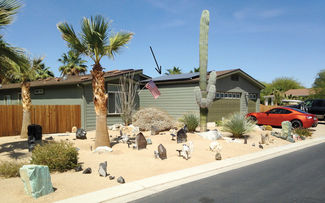To Solar or Not to Solar? The Many Questions to Ask
Last updated 6/1/2015 at 1:45pm
In 2010, my wife and I moved from our 'part-time Borrego resident' house at the RoadRunner Club to our new 'full-time Borrego resident' house on Hoberg Rd. After getting our first summer monthly bill from SDG&E, we went into "electrical shock." And that was before the SDG&E rate increase in 2011 and the most recent average 12.2 percent increase which starts in September but is retroactive to 2012 (making the increase closer to 30 percent in many cases). In fact, electrical rates go up an average of over 6 percent per year. Since we installed our Solar system in 2011, Solar panel efficiency has increased by an average of 15 percent, Solar panel prices have dropped 25 percent and while the smaller state rebate ran out in 2012, the 30 percent federal tax credit is still in effect making Solar more than ever one of the best investments you can make.
There are five questions that I am asked when speaking with potential Solar customers.
How does the system work? When you install Solar (or wind power) on your residence (or commercial building), you enter into a net metering arrangement with SDG&E. You connect your Solar "into the grid" by connecting your Solar output into SDG&E's "net meter" that measures the net quantity of electricity that you use. The net meter spins forward when you use electricity from SDG&E, and it spins backward when you generate excess electricity (thereby "exporting" electricity to the SDG&E electric grid). SDG&E bills you on the net production on an annualized basis. For the safety of repairmen working on the grid, your Solar will not power your house when there is a power outage (unless you install an expensive battery back-up system).
How many Solar panels do I need? The cost of the system depends on how many Solar panels you need and whether you are mounting on a flat roof, a shingle roof, a tile roof or a ground mount system (price goes up in that order). Sometimes you may need roof repairs so that your roof will last the anticipated minimum twenty-five year life of your Solar system. The number of Solar panels is based on your current annual electric usage and is further determined by the zip code you live in (hours of and angle of the sun per year), the orientation of your panels (due south is best), the tilt of the panels and whether there is any shading involved (from trees, buildings etc.). The actual desired size of your system is determined by looking at your last twelve months of electric usage and entering that figure along with the other factors mentioned into a sophisticated computer program which analyzes all the variables.
How much does the system cost? The residential Solar systems I have quoted in Borrego Springs over the past eight months have been between $13,010 ($8750 after rebate/tax credit) and $48,349 ($33,844 after federal tax credit). Your system would probably be between those two numbers.
What are my financing options? There are five ways to pay for your Solar system. Cash, refinancing your mortgage and taking cash out to pay for the Solar, a home-equity line of credit (HELOC), lease, or a non-secured loan (and generally become more expensive in $/watt in that order); which one you choose is determined by your circumstances and credit score.
What is my return on investment? Although many customers get involved in Solar because of an interest in the environment and renewable energy, investment in your own Solar system is one of the highest rate of financial return available to you today. A typical family living in Borrego year-around in a 2000 ft² house probably uses about 13000 kilowatt hours (kWh) of electricity each year. In order to generate 98% of this power yourself, you would need a 7.8 KW (DC-STC) system which would typically consist of thirty 260 watt panels and an inverter(s). Inverters convert the DC current generated by the panels into AC current that you use in your household. A system of this size being mounted on a flat roof in good condition would cost $31,000 and have a net cost to you of $21,700 once you received your federal tax credit. If you paid cash for your new Solar system, your cost of generating 1 kWh of electricity would average out to $.07 over the next twenty-five years versus the average cost of SDG&E purchased electricity being $.25+ per kWh following the September rate increase and projected to rise an average of 6% per year (that would be $1.07 per kWh in 25 years). You would have a power savings of $172, 842 over the 25-year life of the system or a net system benefit of $151,142 after you deduct the net cost of the system. This projects out to a system that pays for itself in just over 6-7 years and an annual rate of return on your $21,700 investment of much more than any other traditional financial investments that I am aware of at the current time. If you finance the system then your return on investment would decrease by your annual loan rate but still be greater than most other investments you can make at the current time. When you also factor in that typically you get back all or most of the cost of the Solar system in increased home value when you sell your house, the return on investment goes up a lot higher. Taking future SDG&E rate uncertainly out of the picture and installing Solar was a no-brainer for me in 2011, it might also be for you today.
For the Full Article Subscribe to the Borrego Sun




